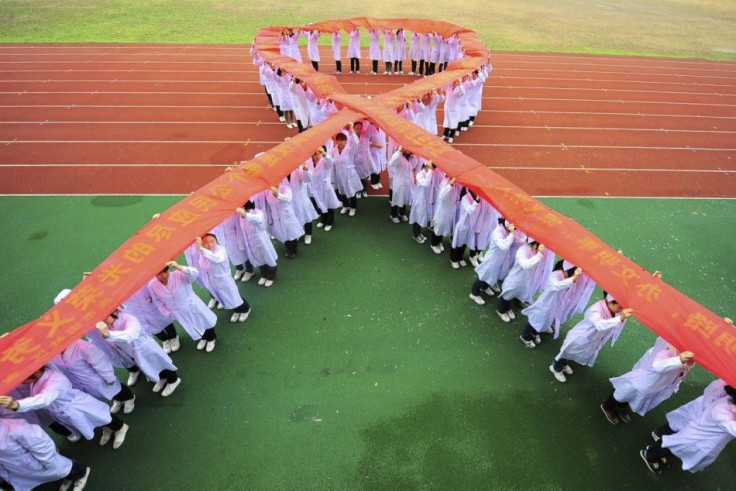Closer Look At HIV Vaccine Trial Yields New Ways To Attack Virus

Efforts to develop a preventative vaccine against HIV have thus far only yielded glimmers of hope. In the RV144 trial in Thailand, the results of which were published in the New England Journal of Medicine in 2009, the infection rate among vaccine recipients was just 31% lower than the rate of those who received placebo.
But a new paper taking a closer look at the people who volunteered for the RV144 trial has identified precise targets on HIV that could form the base of a more effective vaccine.
Led by a group of researchers from the US Military HIV Research Program, the team sequenced the genomes of 936 HIV viruses obtained from more than 100 participants in the RV144 trial - 44 that had received the vaccine, and 66 that were injected with placebo. They reported their findings in the journal Nature on Monday.
The team found that two distinct genetic variants on a particular region of HIV's protein coat called Env-V2 were associated with greater vaccine efficacy, and that the viruses that escaped the vaccine are mutated in this same region.
This latest finding, taken in conjunction with the results of the trial itself, "suggests that the Env-V2 region could be a critical target for future HIV vaccines," senior author Col. Jerome Kim said in a statement on Monday.
The work marks the first evidence of an HIV vaccine exerting pressure on the virus at the genetic level, according to the authors.
By understanding how HIV manages to evade vaccines like those used in the RV144 trial, researchers may be able to develop new strategies to cut off its escape route.
"This study underscores the realistic optimism you see in the HIV vaccine research field today," Col. Nelson Michael, director of MHRP, said in a statement Monday. "We are making substantive progress in understanding what it will take to develop a more effective HIV vaccine which will ultimately help us end this pandemic."
SOURCE: Rolland et al. "Increased HIV-1 vaccine efficacy against viruses with genetic signatures in Env V2." Nature published online 10 September 2012.
© Copyright IBTimes 2025. All rights reserved.





















